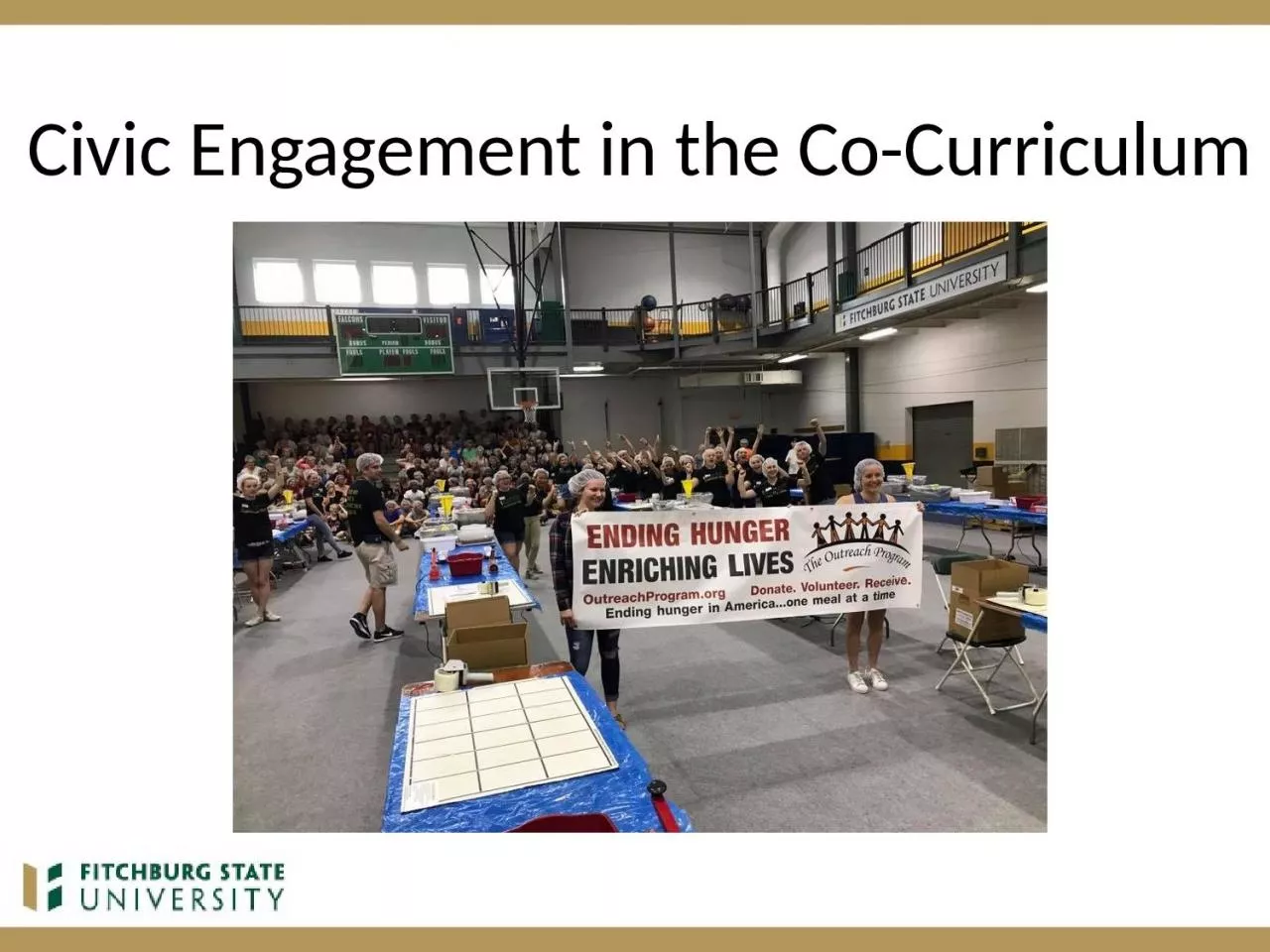

What Kinds of Civic Engagement Happen Outside the Classroom Student Governance Political Activism ie student political organizationsRock the Vote drives demonstrations Advocacy ie Its On Us Black Lives Matter Feminist Conversations Peer Educators ID: 1034330
Download Presentation The PPT/PDF document "Civic Engagement in the Co-Curriculum" is the property of its rightful owner. Permission is granted to download and print the materials on this web site for personal, non-commercial use only, and to display it on your personal computer provided you do not modify the materials and that you retain all copyright notices contained in the materials. By downloading content from our website, you accept the terms of this agreement.
1. Civic Engagement in the Co-Curriculum
2. What Kinds of Civic Engagement Happen Outside the Classroom?Student GovernancePolitical Activism – i.e. student political organizations,”Rock the Vote” drives, demonstrationsAdvocacy – i.e. “It’s On Us,” Black Lives Matter, Feminist Conversations, Peer EducatorsWorkshops, panels, speakersFree Tax Assistance
3. What Kinds of Civic Engagement Happen Outside the Classroom?Sometimes a requirement for any Student Organization to receive recognition and fundingGreeksAlternative Spring BreakBoys & Girls ClubsBlood DrivesTutoring in Area SchoolsService Clubs – i.e. Alpha Phi Omega, Rotaract, Habitat for Humanity, Colleges Against Cancer, Relay for LifeService Days/EventsPhilanthropic and Service Activities
4. Co-Curricular Challenges & Advantages for AssessmentChallengesLack of outcomes (in some cases)Less structured collection of data (written student work, assignments, etc.)Student resistance to formalized reflection or assessmentVaried duration and intensity of the experienceAdvantagesDefined outcomes (in some cases)Flexibility to try new thingsAbility of students to be in leadership roles and shape the learningMulti-year commitment from students at times
5. How do we Assess?Programmatic or Site OutcomesTrack numbers (i.e. hours devoted, number of voters registered, programs presented, money raised, number of times a topic is raised in official communications, number of families served)Feedback from agency or non-profit about results (interview, focus group, survey)
6. How do we Assess?Student Learning OutcomesFrom others:Observations from agency or non-profit about student learning and student development (interview, focus group, survey)Observations from the advisor or peer leader about student learning and student development (interview, focus group, survey)
7. How do we Assess?Student Learning OutcomesSelf-ReflectionJournalingReflective interviews or papersPortfolioSurveys of current participants/leaders Surveys of alumni focusing on reflection on what was learned, continued civic engagement, continued philanthropic activity
8. How do we assess?Connecting to Larger EffortsAAC&U VALUE Rubrics (one is Civic Engagement) – Valid Assessment of Learning in Undergraduate EducationNational Survey on Student Engagement (NSSE)Cooperative Institutional Research Program (CIRP)
9. How to Use Assessment ResultsDemonstrate impact on achievement of institutional goalsLink to external measures of qualityAssist students in making meaning of their growth and experiencesAttract prospective studentsRevise for effectiveness and best use of institutional resources